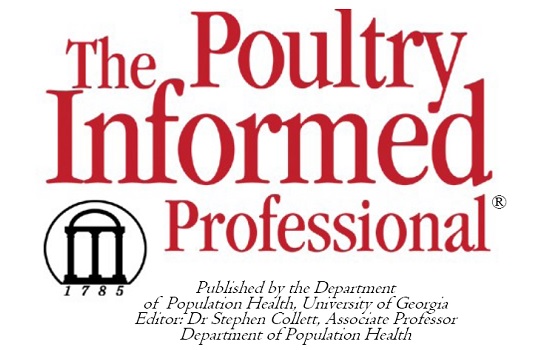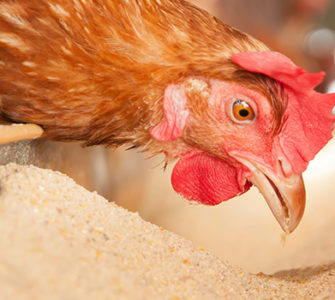Antibiotic use in the U.S. poultry industry
website builder By
C.S. Roney, DVM, MAM
Poultry Diagnostic and Research Center
University of Georgia, Athens, GA
Why do we use antibiotics in livestock?
Antibiotics are used in food animals to treat clinical disease, to prevent and control common disease events, and to enhance animal growth. When antibiotics are used appropriately, the risk of antibiotic residues in our meat, milk or eggs is absolutely negligible. The different applications of antibiotics in food animals have been described as therapeutic use, prophylactic use, and sub therapeutic use. Antibiotics can be used to treat a single animal or an entire flock or herd.
In the past few years, concerned groups have been critical of antibiotic use in food animals. They believe that antibiotic resistance develops when low or sub therapeutic doses of antibiotics are routinely given to farmed livestock, a procedure we know as growth promotion. While research that clearly defends this idea is scarce, we will attempt to describe the current usage of antibiotics in poultry and examine some of the results that have been observed.
Much of the information that is presented as fact from many of the anti-antibiotic groups appears to be confusing. For instance, a statement from the Farm Forward1 internet site states their mission as to eliminate “factory farming” which has devastated rural economies, resulting in systematic animal abuse and pollution of the environment.” This statement is bold and one might argue that it is opposite of what has actually occurred over the last 100 years. Another statement by the same group is, “the greatest threat from the present nontherapeutic use of antibiotics for livestock comes from the fact that the conditions on factory farms promote the growth of new superpathogens like H1N1 and MRSA.” This statement is, of course, confused and without scientific defense.
The Union of Concerned Scientists reported in 2007 that 24.6 million pounds of antibiotics were used in U.S livestock. This figure was increased to 29.9 million pounds in a report in 2009 and continues to increase each year as shown in Table 1.2 Since the vast majority of the American public views antibiotics in terms of small capsules as prescribed by their physician, this figure is mind boggling. They also fail to understand that nearly half of this total is ionophores which have no applicability to human health. There are also many times more head of livestock than people in the U.S. and antibiotic usage in livestock is much lower per pound of animal than that per pound of people and pets by a factor of at least 10 fold.3
In any event, public opinion runs strong and consumer groups are demanding that the poultry industry curb or at least redefine its usage of antibiotics during the rearing and production periods. Various classifications of antibiotic free/ raised without antibiotics/ organics, etc. have been established by various integrators and some have been verified by the USDA-AMS. The adoption of these programs by producers are used to satisfy specific customers who have their own individual requirements as well as to market their product in a competitive environment.
In order to make some judgment as to the value of antibiotic reduction programs, let’s first take a look as to why and how we have used antibiotics in the poultry industry. We have historically used antibiotics in the broiler industry to:
- Prevent coccidiosis- primarily ionophores
- Control necrotic enteritis
- Treat or prevent disease
- Promote growth and feed efficiency
The first and fourth items in the above list account for the vast majority of antibiotics that have been used in broilers.
For many years, antibiotics were administered subcutaneously at day of age into most every broiler when applying Marek’s vaccine. This was a “shotgun” approach to cover hatchery sins that were affecting 7 day mortality. Since in-ovo injection of Marek’s vaccine has become ubiquitous, the antibiotics are still added but at a lower rate. The practice of in-ovo application of a broad spectrum antibiotic has become much less common now with some companies eliminating the procedure entirely. This age old procedure will soon become obsolete and perhaps needs to be.
Using antibiotics in poultry feed for the purpose of promoting growth and feed efficiency comes under much ire by public groups who do not understand commercial poultry practices and even resent any profitability by the industry. Growth Promoters were so named because of their approved use by the FDA as described in the Feed Additive Compendium. The same antibiotic that might be labeled as a therapeutic at one level in the feed might be labeled for growth promotion at a lower level. Since FDA does not allow deviation from approved levels, one must choose whether they wish to use the product at a lower level under the growth promotion claim but in essence to maintain the integrity of the intestine against pathogen challenge, or, use the higher level for disease control. While using the product at a lower level is frowned upon by special interest groups, the use at a higher level is actually more accepted. But, is this a good practice for us as an industry just to escape public criticism? Again the thought turns to the statement previously quoted: “antibiotic resistance develops when low or sub therapeutic doses of antibiotics are routinely given to farmed animals.” Is this really true? When one considers the life span of drugs like bacitracin as compared to the fluoroquinolones, perhaps we find that the reverse is true. And if it is, are we really solving anything by eliminating low level, disease prevention programs in favor of increasing usage of therapeutic levels?
There are some feed additive antibiotics that work primarily by manipulation of the gut flora resulting in growth promotion. These products are not effective as direct therapeutics so are not labeled for disease prevention and control by FDA. However, customer demand for nonuse of all growth promoters will most likely preclude the use of these products in most operations. One option is to actually use the source organism, in spore form, as probiotic products which currently fly under the radar as Generally Recognized As Safe (GRAS) products for addition to poultry feeds.
The WHO has developed criteria for the classification of antibiotics as “critically important,” “highly important,” and “important” based on their importance in the treatment of human disease. FDA Guidance Documents #120, #209 and #213 have established guidelines for bringing feed antibiotics under veterinary control and eliminating the use of medically important drugs solely for growth promotion. As a whole, these new regulations, which will go into full effect in January 2017, will be good for the industry and will perhaps slow the decline of effectiveness for the few products we have for disease therapy in poultry. However, the surrender of all antibiotic therapeutic use and the blanket categorization of ionophores as antibiotics is probably not in the best interest of the industry and the animals it rears. Some of the antibiotic classes and their classifications are shown below:
So what are our responsibilities as poultry practitioners? I think number one is to alleviate suffering from disease. This is our most basic responsibility to the animals we serve. Protecting the public health is just as important but we are also responsible for producing healthy animals for our employers. There is a way to accomplish all of these although they seem to contradict. By working in conjunction with the new FDA rules that will place the burden of care on the veterinarian as well as working with the industry to work reasonable relationships with customers, we might very well improve our situation of medicinal use as well as enhance modern management practices that might have been lagging for too long.
Dr. Steve Roney is the newest member of the PDRC Clinician team. He obtained his DVM from Auburn University in 1981 and the MAM from UGA in 1987. During his 29 years in the poultry industry, Dr. Roney has worked as director of a diagnostic lab and as a technical service veterinarian for both vaccine and pharmaceutical companies. He spent 10 years as a broiler production veterinarian for Sanderson Farms and Pilgrims (formerly Gold Kist). He also worked 5 years with the National Poultry Improvement Plan, most recently as senior coordinator. Dr. Roney is pleased to be back at PDRC and particularly enjoys working with the MAM students in both diagnostics and field services.
References:
2) FDA- 2013 Summary Report on Antimicrobials Sold or Distributed for Use in Food- Producing Animals
3) Journal of the American Veterinary Medical Association vol 218(10), May 15, 2001.
Article courtesy of The Poultry Informed Professional
Published by the Department of Population Health, University of Georgia
Editor: Dr Stephen Collett, Associate Professor
Posted on November 9, 2015


















